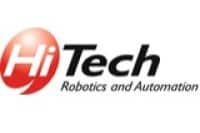What is an employee ownership trust?
An employee ownership trust (EOT) is a trust that acquires shares in a company and holds them on behalf of the employees. It is an increasingly popular exit strategy for shareholders which offers attractive tax incentives and peace of mind over the future of the business and its employees.
There are three types of employee ownership trust models which are Direct ownership, indirect ownership and hybrid ownership. Please read our Employee Ownership Trust Guide for more information.
When should an Employee Ownership Trust be considered?
Although the employee ownership structure offers a tailored solution to suit many companies, it is not suitable for all business disposals.
Employee ownership is an exit route that enables the employees to control the company’s succession and as such, is centered around employee reward, leadership and innovation.
The EOT model would suit an exiting shareholder who wishes to pass on the management and ownership of the company to its current workforce, who can ultimately benefit from the financial advantages of company ownership. It is a very attractive exit strategy for those looking to preserve company culture and avoid a potentially hostile and undesirable restructuring from a third-party acquirer.
An EOT disposal may also be an attractive route for shareholders who still wish to retain a level of ownership, since up to 49% of the shares can be retained post-transaction (i.e. the trust has to be the controlling shareholder in order to qualify for the tax benefits).
Who would an Employee Ownership Trust work well for?
As there is no requirement for the exiting shareholders to cease to be employees/directors and the current management team can continue to run the company post-transaction (relevant for owner-managed businesses). As such, there is no specific need for there to be a second tier of management at present, and therefore employee ownership trusts are an attractive option for smaller companies as well as SMEs and larger entities alike.
EOTs are relatively sector agnostic – the most important factors being the employees’ hunger to grow and steer the company and the exiting shareholders’ vision for rewarding the employees as a collective.
Why does the government support Employee Ownership Trust’s?
EOTs are in essence a form of employee benefit trust introduced by the UK Government in 2014. This was to encourage shareholders to follow an ownership structure similar to the John Lewis model. It is believed that employee-owned businesses achieve higher productivity and greater levels of innovation than privately owned businesses and are more resilient to economic turbulence.
Key Employee Ownership Trust qualifying conditions
The company must be trading;
The acquiring trust must own a controlling interest in the company on behalf of the employee beneficiaries, and the controlling stake must apply to share capital as well as voting rights;
Trust property must generally be applied for the benefit of all eligible employees on the same terms. But the trustees may distinguish between employees on the basis of remuneration, length of service and hours worked.
What are the advantages of selling to an Employee Ownership Trust?
Owner
- Receive a fair market value for shares
- A smoother and less contentious exit (than a typical trade sale)
- Generous tax advantages including no Capital Gains Tax payable by the exiting shareholders on the disposal
- Rewards employee loyalty and protects the legacy of the company
Employees
- Rewarded for their loyalty and hard work
- Employees can receive up to £3,600 of income tax-free bonuses per year (National Insurance Contributions will still need to be paid)
- Increased employee engagement and the benefits of ownership without capital injection or personal liability
The business
- Retain culture and legacy
- Enables a gradual and controlled transition of leadership as exiting shareholders can retain management positions and phase out their retirement to suit the needs of the business
- Employee-owned companies tend to be more resilient to economic turbulence
- Long-term view on strategy
How does a sale to an Employee Ownership Trust work?
The EOT transition process includes the following key steps:
Valuation
An independent expert valuation is performed on the shares of the company, offering reassurance to both parties, the exiting shareholders and the remaining employees of the trading company, that the business is being transferred over to the trust at fair market value.
Deal Structuring
Financial forecasts are prepared and this helps determine the level of consideration payable on completion, and the terms of deferred consideration in order to ensure that the business has cash headroom to operate effectively and in the interest of principal company and the employees post-completion. This may involve securing external finance from third-party lenders.
Obtaining Tax Clearance
Once a structure has been confirmed and agreed, clearance to proceed with the transaction is obtained from HMRC in order to gain comfort on specific and complex tax areas.
Legal Documents
Legal documents are drawn up and reviewed to ensure that the EOT meets the specific conditions in order to qualify for tax relief and protect the interests of exiting shareholders and employees alike.
Pete Wilmer
Corporate Finance Partner
Contact our EOT experts

Pete Wilmer
Corporate Finance Partner
Pete leads the Corporate Finance offering across the firm, having has spent much of his career within a large international accountancy firm and corporate banking before returning to Hawsons, where he started. Working with businesses of all sizes, Pete has an exceptional breadth of experience which he brings to the benefit of clients.
An early adopter and passionate believer in good employee ownership, Pete has helped numerous businesses transition to employee ownership and works extensively to promote the employee ownership model.
Related content
TMS Europe complete transition to an Employee Ownership Trust
Peter Wilmer and Jack Ware, members of the Hawsons Corporate Finance team, acted as lead advisors for TMS Europe Limited’s (“TMS”) transition into employee ownership. Ryan Fitzpatrick from Shakespeare Martineau LLP provided legal advice on the transaction. TMS Europe...
Hi-Tech Automation – 12 months into Employee Ownership
Employee Ownership is where the whole or part of a Company is owned by, or on behalf of, its employees. The government introduced some new and relatively generous tax reliefs for employee-owned companies in 2014 and since then Employee Ownership Trusts (“EOTs”) have...
Employee ownership trust problems
In this article, we are going to outline some of the problems that might arise if the transition to employee ownership is not managed and advised on correctly.Valuation of the company When selling your business to an EOT it is very important that you keep the...




